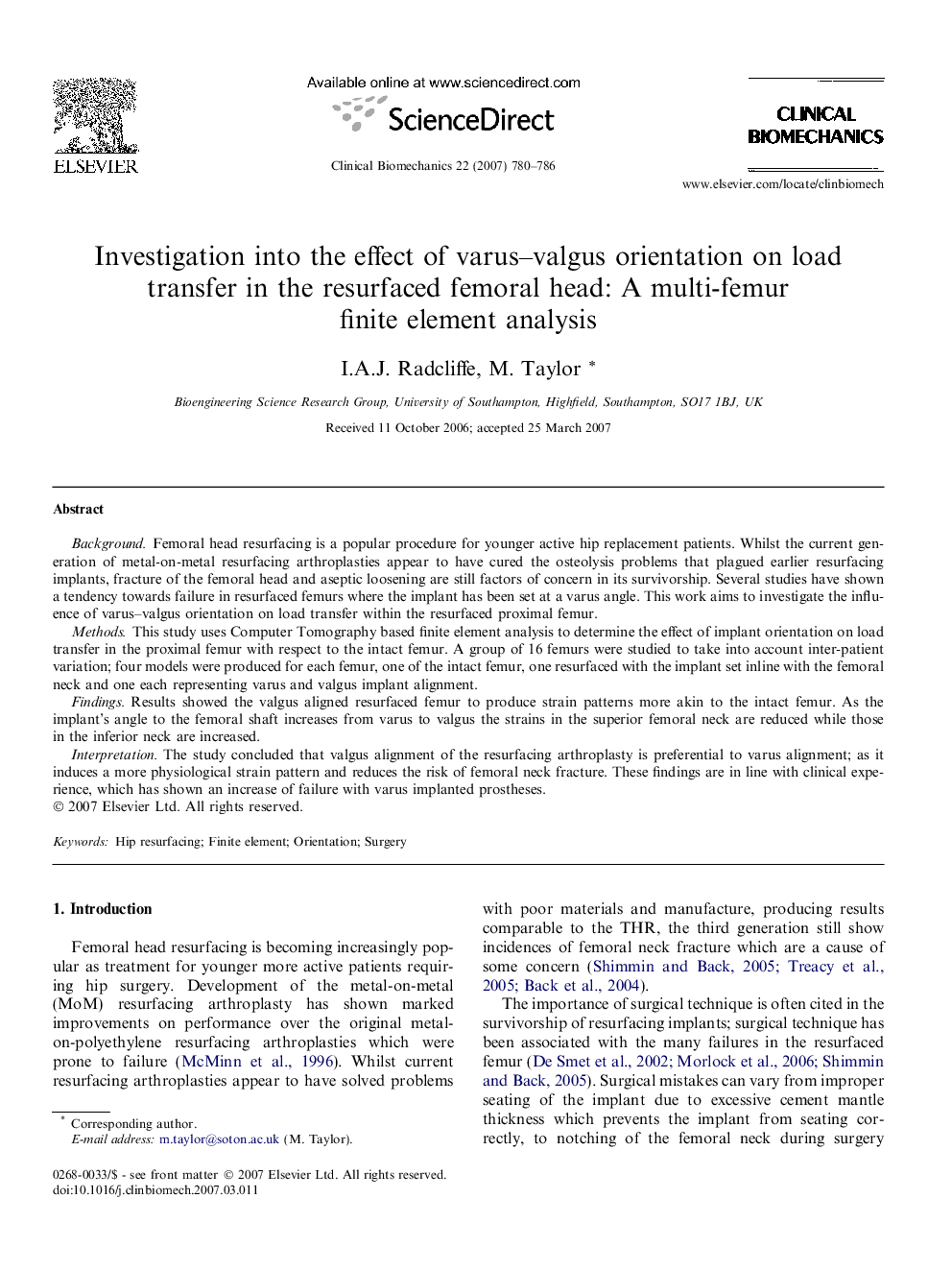| کد مقاله | کد نشریه | سال انتشار | مقاله انگلیسی | نسخه تمام متن |
|---|---|---|---|---|
| 4051259 | 1264983 | 2007 | 7 صفحه PDF | دانلود رایگان |

BackgroundFemoral head resurfacing is a popular procedure for younger active hip replacement patients. Whilst the current generation of metal-on-metal resurfacing arthroplasties appear to have cured the osteolysis problems that plagued earlier resurfacing implants, fracture of the femoral head and aseptic loosening are still factors of concern in its survivorship. Several studies have shown a tendency towards failure in resurfaced femurs where the implant has been set at a varus angle. This work aims to investigate the influence of varus–valgus orientation on load transfer within the resurfaced proximal femur.MethodsThis study uses Computer Tomography based finite element analysis to determine the effect of implant orientation on load transfer in the proximal femur with respect to the intact femur. A group of 16 femurs were studied to take into account inter-patient variation; four models were produced for each femur, one of the intact femur, one resurfaced with the implant set inline with the femoral neck and one each representing varus and valgus implant alignment.FindingsResults showed the valgus aligned resurfaced femur to produce strain patterns more akin to the intact femur. As the implant’s angle to the femoral shaft increases from varus to valgus the strains in the superior femoral neck are reduced while those in the inferior neck are increased.InterpretationThe study concluded that valgus alignment of the resurfacing arthroplasty is preferential to varus alignment; as it induces a more physiological strain pattern and reduces the risk of femoral neck fracture. These findings are in line with clinical experience, which has shown an increase of failure with varus implanted prostheses.
Journal: Clinical Biomechanics - Volume 22, Issue 7, August 2007, Pages 780–786